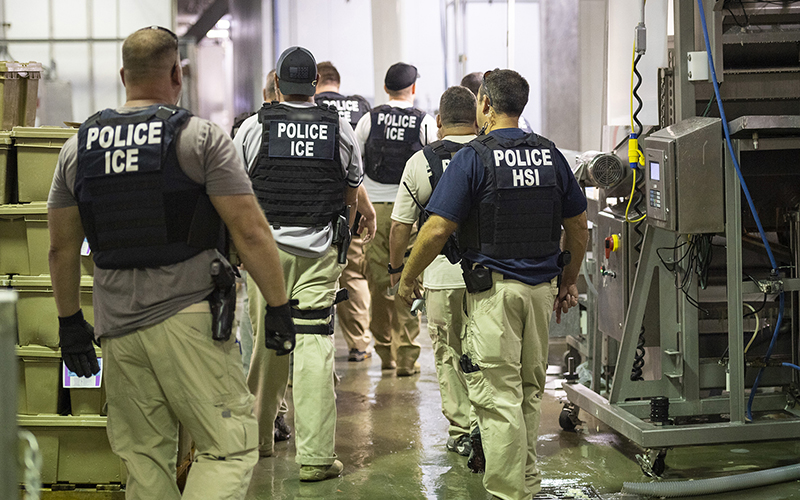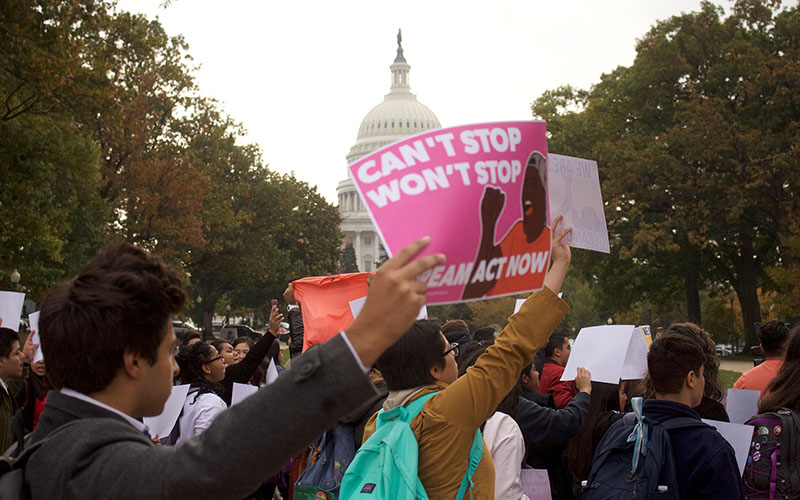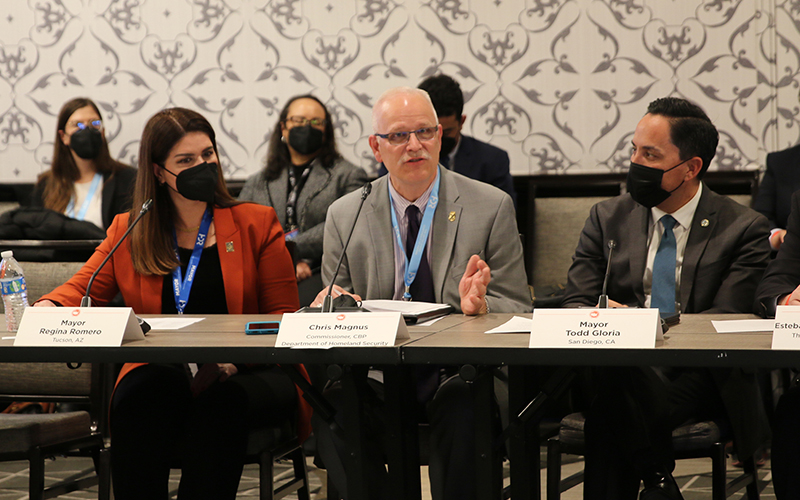WASHINGTON – Of more than 3 million DACA applications since 2012, about 900 were referred to Immigration and Customs Enforcement – still too many for advocates who said they were promised no information would be shared with enforcement agencies.
The numbers were contained in a recent Government Accountability Office report that said U.S. Citizenship and Immigration Services can refer information on immigrants whose applications for Deferred Action on Childhood Arrivals protection are denied, if they also include indications of criminality or fraud.
Only 106,000 applications were denied between 2012, when DACA began, and June 2021, and less than 1% of those were forwarded to ICE, the GAO said. But advocates say that could still have a chilling effect on would-be applicants.
“There’s still several people that I know personally … who have not submitted DACA applications because they were afraid that that information was going to be shared with ICE, and news like this affirms their decision,” said José Patiño, director of education and external affairs for Aliento, an Arizona-based advocacy group providing support to undocumented youth.
Evangeline Chan, the director of the Immigration Law Project at Safe Horizon, a victim’s services nonprofit, said those fears are not unfounded, despite the low number of reports to ICE.
“We tell our clients that there is always a risk whenever they submit an application to immigration and we advise them on what the relative risk is,” Chan said. “For DACA applicants, it is considerably low, and definitely lower than other groups and other applications for different forms of relief, but it’s not zero.”
The January GAO report was requested by the House Judiciary Committee in response to a 2020 ProPublica report that found ICE had access to the databases overseen by USCIS, the agency that processes DACA requests.
DACA is aimed at undocumented immigrants who were brought to this country as children and may have known no other home. The Obama-era program does not prevent their deportation, but puts it on hold for two years at a time, granting successful applicants the ability to work, drive and go to school while protected, among other benefits.
In order to qualify, applicants have to be under a certain age, have lived in the U.S. for minimum of five years, have a clean record and be in school, graduated or in the military. They also pay a $495 for every application, which can be renewed.
As many as 800,000 people had DACA protection at the high point of the program, but that number had fallen to 611,030 as of September, according to USCIS data, as the agency stopped processing applications in the face of legal challenges.
The number of DACA recipients in Arizona was as high as 30,358, but that had slipped to 23,070 by September, according to USCIS.

The GAO report did not say how many of the cases ICE might have acted on, but noted that the agency “does not have the resources to investigate every referral.” (Photo courtesy Immigration and Customs Enforcement)
DACA applications that have been denied due to an indication of criminality or fraud can be referred to ICE, but only if the applicants have “engaged in certain types of fraud or activities that posed a threat to national security or public safety.”
The GAO report did not say how many of the 900 referred applications were acted on by ICE, but noted that ICE “does not have the resources to investigate every referral.”
“Its criteria for accepting referrals prioritize high-impact, complex, large-scale criminal cases, often involving large international or criminal organizations,” the report said.
But Chan said her team has seen DACA clients referred to ICE for deportation proceedings.
Maria Garcia, a second-year Arizona State University student, applied for DACA in December 2020 and was surprised to find out that ICE was given access to any information regarding DACA applications. She said that even though she filed her application with help from a DACA advocacy group, she was not told about the possibility of being reported.
“To know that they can just look at my application or literally anyone’s … I wasn’t aware that they were able to do that,” Garcia said. “And I don’t feel safe.”
Patiño, himself a DACA recipient, has been involved in advocacy for DACA since it was implemented in 2012. He said the report is frustrating because advocates and DACA-eligible immigrants were promised when the program was first discussed that information would not be shared.
“We were assured multiple times by the Obama administration and officials saying that that information was going to be kept at USCIS, that there was no way that USCIS would share that information with ICE,” Patiño said.
Even before the GAO report, he said, concerns about being referred to immigration enforcement persisted.
“I had a conversation with a student on Saturday (Jan. 29) where he was afraid of this, he doesn’t want people to know his DACA status because his parents and him believe that there’s a possibility that ICE will be able to get a hold of him somehow,” Patiño said.
Chan said it’s impossible to completely cut off the flow of information between USCIS and ICE. She said USCIS has a duty to report any individuals with particularly dangerous criminal backgrounds so that ICE can remove those who pose a threat to national security or public safety.
Though there is a risk, Chan encourages those eligible for DACA to reach out to advocacy groups or attorneys who can assist them through the process of applying and weigh the risks of applying against the benefits.
“We would definitely assess a person’s eligibility first to see if they are at any risk and what kind of risk based on their history and their criminal record if they have any,” she said. “Then ultimately, it would be their decision whether or not they want to move forward, knowing that there is a risk.”



